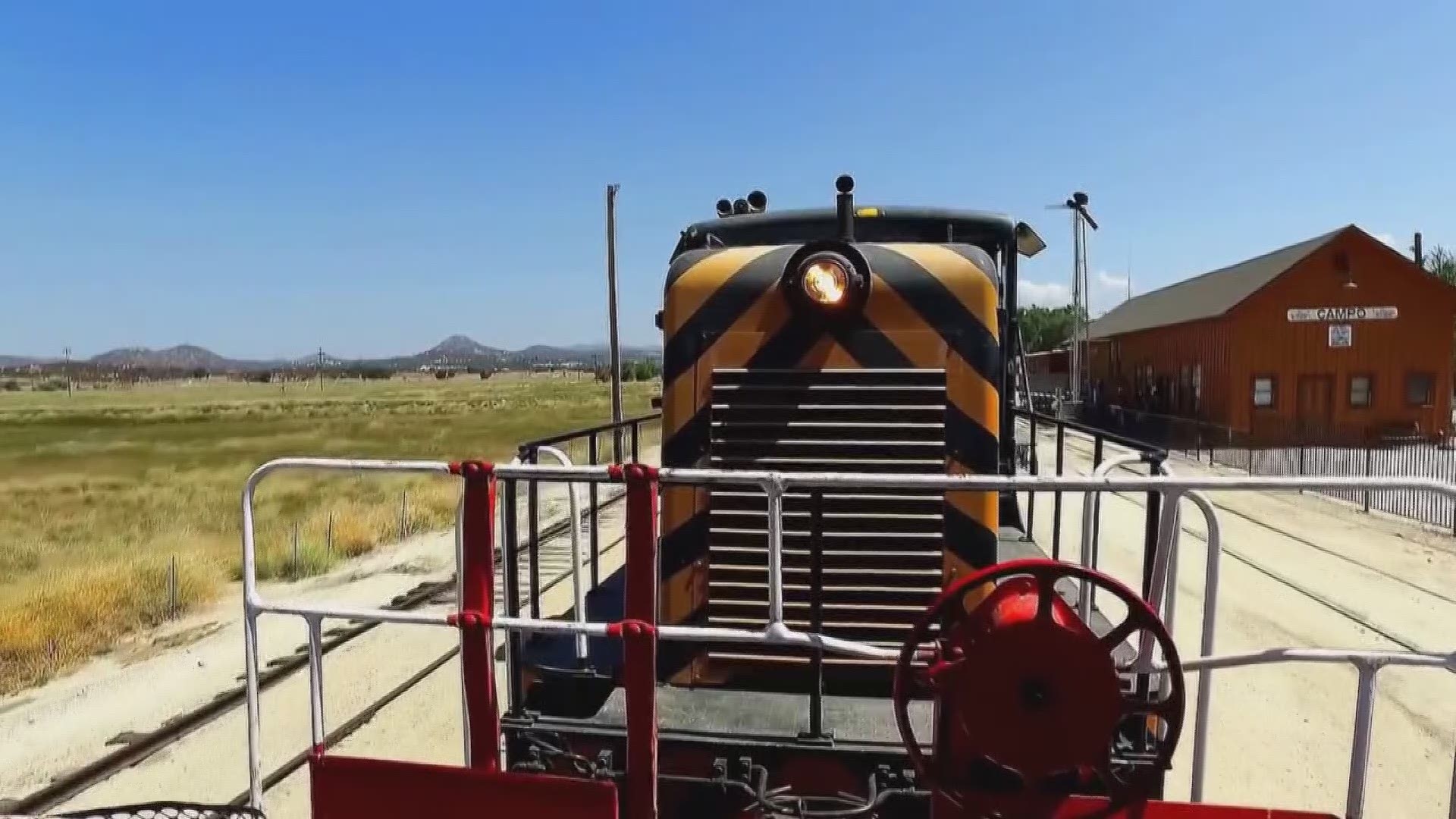I'm almost embarrassed to admit, I had not idea you could ride the rails in Campo. "All aboard!" yelled the conductor at the Pacific Southwest Railway Museum Association.
I mean who knew all of these volunteers have been out here working on a railroad? "Oh, all kinds of people It's not just old guys, it's also a bunch of young people," said Diana Hyatt. She is the president of the non-profit museum and that means she gets to drive. "The best part is running the locomotive I think hands down everybody would agree," said Diana. She offered to give me a crash course, without the crashing part. "This is the brake for the locomotive," she said. The next thing I knew I was driving a train and blowing the horn.
The Pacific Southwest Railway Museum Association (PSRM), a San Diego-area historical and educational nonprofit, will mark the 100-year anniversary of the completion of the San Diego & Arizona Railway (SD&A) with a variety of family-friendly activities at its "SD&A Centennial Celebration Gold Spike Day" on Saturday, November 16, at PSRM's Campo Railroad Park and Museum in Campo, California. The public is invited to attend.
The short version of a long railroad story is one hundred years ago, San Diego was finally connected to country's railroad network. Before they built the stretch of railway San Diegans had to go all the way to Los Angeles to take a train to New York. That's right, Los Angeles and San Francisco were all part of the trans-continental connection but not us. That is until San Diegan's started raising money and you know what demanding a railroad. "What took San Diego so long?" I asked.
Bruce Semelsberger is the historian out here. He responded, "The mountain range primarily. The Laguna Mountains" Bruce said 21 tunnels along with treacherous one thousand foot cliff drops are just two of the reasons they called it the Impossible Railroad. "Well the fact that it took 13 years to build a 140 mile railroad should give you a pretty good clue," said Bruce.
Stretching 148 miles from San Diego to El Centro, including 44 miles in Mexico, the construction of the SD&A was financed by Spreckels at a cost of $18 million, or roughly $123,000 per mile. On Nov. 15, 1919 in Carrizo Gorge, Spreckels himself drove the final "gold spike."
Activities for the day-long, centennial celebration of the November 1919 completion of the SD&A will include vintage train rides aboard full-size, restored locomotives and train cars from the early 20th century, live music, lectures on the history of the SD&A and activities for children, including storytelling, face painting, circus performers, medicine show performers and hay rides.
At 9 a.m. on Saturday, November 16, in Campo, a ceremony will be held to unveil and dedicate a 100th anniversary commemorative plaque from the Native Sons of the Golden West. At 1 p.m. a special gold-spike reenactment ceremony will be held. This a chapter in San Diego's history you don't have to just read about, you can ride. Take it from me, this isn't just a trip back in time, it's a good time.
Many activities on November, 16 will be free, although costs for train rides aboard full-size, restored diesel and steam locomotives and train cars will range from $14 to $28 per person. Lunch catered by Descanso Junction Café will be available for $16.50 per person. Menu will include pulled pork sandwich, gourmet hot dog, hamburger or veggie burger, plus coleslaw and french fries, soda or water.
For more information about the PSRM centennial anniversary of the SD&A, visit www.psrm.org.

